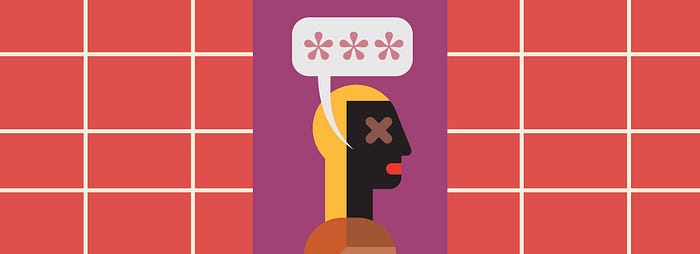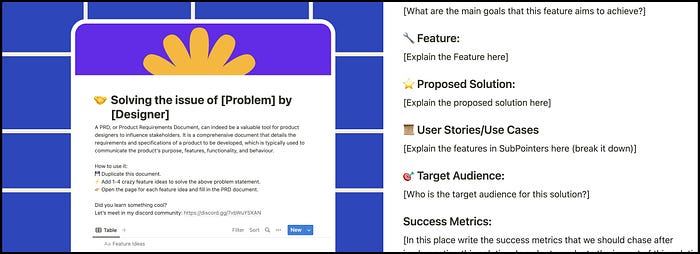

How to Influence Stakeholders as a Product Designer? — Secret Weapon
source link: https://uxplanet.org/how-to-influence-stakeholders-as-a-product-designer-62ce802c4402
Go to the source link to view the article. You can view the picture content, updated content and better typesetting reading experience. If the link is broken, please click the button below to view the snapshot at that time.

How to convince stakeholders as a product designer
How to Influence Stakeholders as a Product Designer? — Secret Weapon
Have you ever faced the challenge of presenting a visionary design to stakeholders only to find them not fully grasping its potential?
Product designers are the architects of user experiences, crafting interfaces that are not only visually stunning but also functional and intuitive. But there’s a critical skill that often goes unnoticed: the ability to sell your design to the people that matter most — stakeholders.
And in the world of product design, there’s a secret weapon that can help you achieve just that. I’ve been using this as a Key and as an ultimate influencer’s tool — Product Requirement Doc (PRD).
Think of a PRD as the chef’s secret recipe. It has all the ingredients (features), the cooking process (development phases), and even the picture of the final dish (product vision). It’s the roadmap that takes everyone from the first spark of an idea to the realization of the final product.
So how does a PRD look?

Product Requirement Document
A PRD is a comprehensive tool that goes beyond mere technical requirements. It offers a strategic view of your design, communicating its value to stakeholders and effectively garnering their support.
Let’s break down each component of a PRD to understand its potential in influencing stakeholders:
- Clear Objectives: Every PRD kicks off with clear objectives. For example, if you were to design a new feature for a popular fitness app like Fitbit to gamify workouts, your objective could be to boost user engagement and increase daily active users. Stating the ‘why’ of your design right upfront allows stakeholders to see its business value.
- Detailed Features: Your PRD should offer a detailed account of the features. With the fitness app, the gamified workouts could involve daily challenges, badges, and leaderboards. This clear, explicit breakdown of features gives stakeholders a deeper understanding of your design.
- Proposed Solution: This is your strategy — how your design will achieve the set objectives. With the daily challenges, workouts become more interactive and fun, enhancing user engagement.
- User Stories/Use Cases: This involves breaking down features into smaller, digestible parts. It can include scenarios like, “When a user completes a challenge, they earn a badge.” This gives stakeholders a glimpse into the user experience and helps them understand the design’s practicality and appeal.
- Target Audience: Identifying the target audience shows who stands to benefit from your solution. In our example, it could be fitness enthusiasts looking for a fun and interactive way to workout. This helps stakeholders understand the market demand.
- Success Metrics: Defining success metrics shows what you’re striving to achieve, like increasing the daily active users by 20% or improving user engagement by 30%. It gives stakeholders a quantifiable measure of the design’s potential impact.
- Wireframes: Including wireframes of your design offers a visual perspective of the proposed solution. Suppose you include a wireframe showing the proposed layout of the daily challenges. It would offer a tangible vision of the user interface.
- Assumptions and Risks: Highlighting the assumptions you’ve made and the potential risks shows stakeholders you’ve thought through multiple scenarios. For example, an assumption could be that users would enjoy gamified workouts, and a potential risk might be the increased complexity of the app.
In essence, a PRD is your persuasive toolkit as a product designer. It communicates your design’s potential, its purpose, its strategy, and its measurable impact, effectively influencing stakeholders. It’s like the ‘Hook’ model for stakeholder buy-in.
The more effectively you communicate your ideas through a PRD, the stronger your influence becomes. So, embrace the power of PRDs and start steering your designs to success. After all, design is not just about creating — it’s about influencing!
Anyways I’ve made a super cool FREE Notion template that you can duplicate and kickstart right now👇🏼
The Ultimate Notion PRD Template for Product Designers: Secret weapon to influence stakeholders…
Ever struggled to get your brilliant product ideas approved? Felt like your innovative designs are overlooked? Say…
Cheers! You’re Breathtaking!
Recommend
About Joyk
Aggregate valuable and interesting links.
Joyk means Joy of geeK